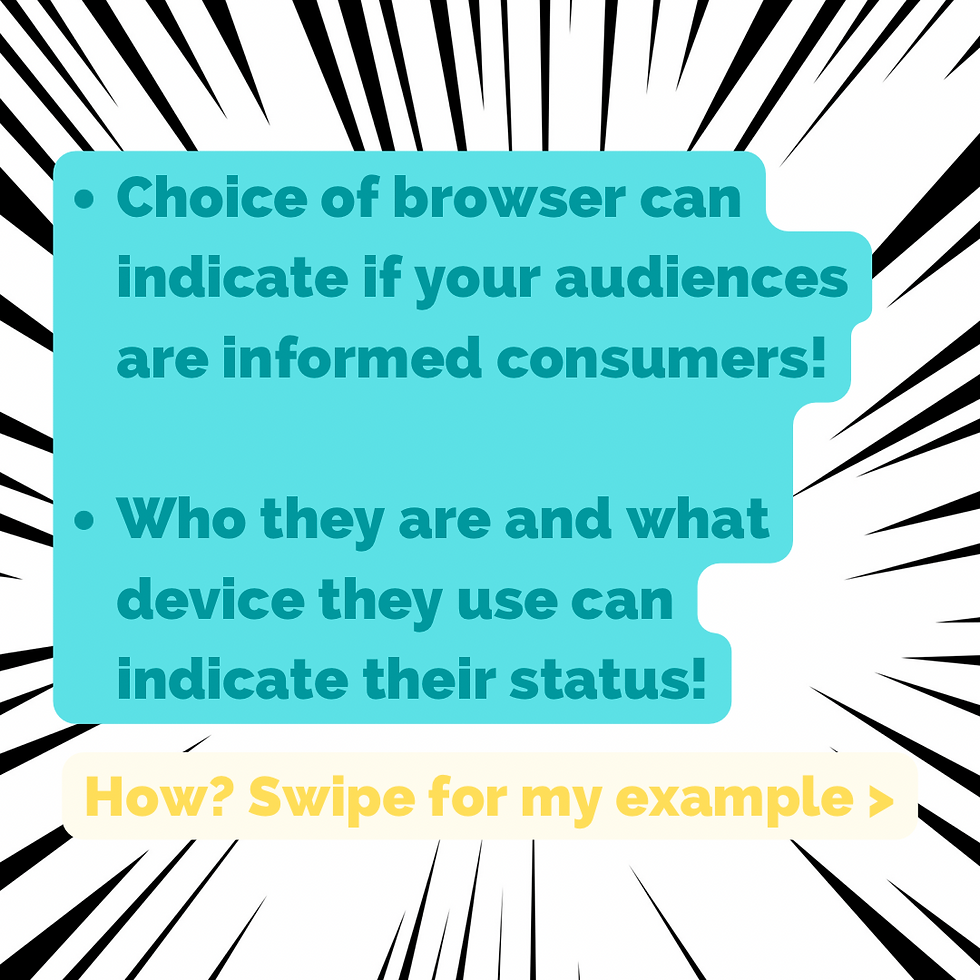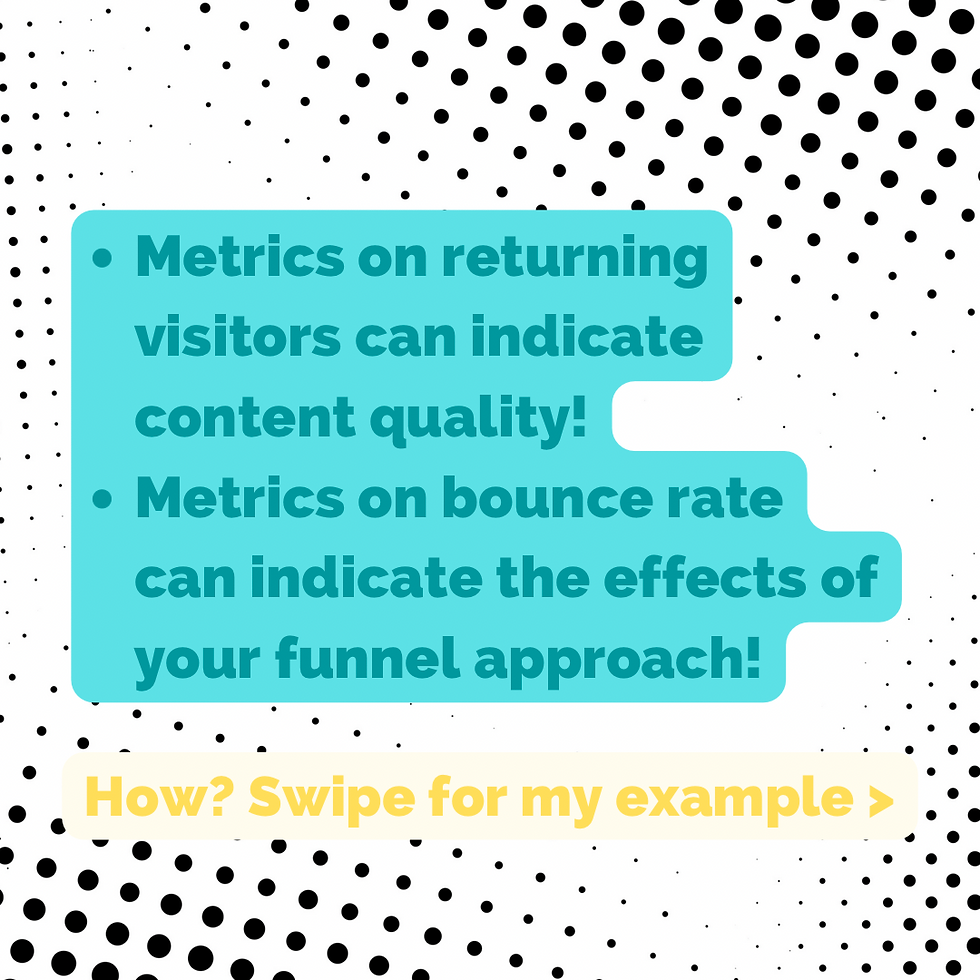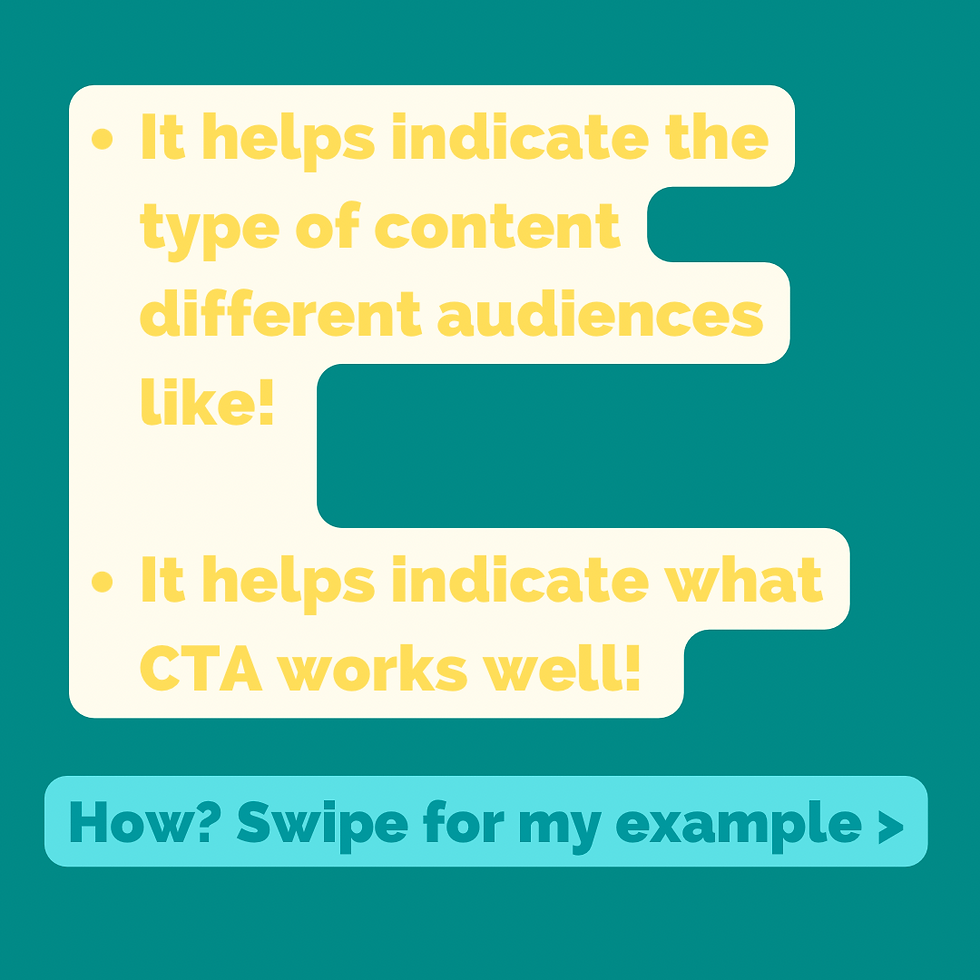Web metrics to watch! Data that indicates web content success
- Joyce Tsang
- Aug 29, 2022
- 6 min read
Updated: Sep 2

Understanding web metrics
Marketers love numbers—but too often, they stop at surface-level metrics. A spike in traffic, a bump in engagement, a dip in bounce rate… all celebrated without understanding why.
The truth? Data without context is just noise. Real success comes from spotting patterns, connecting metrics, and turning numbers into actionable insights.
In this post, I’ll show you how to read your web data like a strategist—not just a statistician—so you can create content that consistently hits benchmarks and drives meaningful results.
*Such data may no longer be available on GA4.
1. Device, Technology, Demographics
Content marketing is a combination of art and science, a blend of creativity and research,
and a full-on approach from strategy to data analysis.
Yet, most people, even marketers, stop to identify learnings after the content is published. They assess content performance with numbers that have no back story. They celebrate the increase in traffic that is nothing more than Google Analytics numbers. The client or owner never understands beyond the growth and drop in data. No correlation or patterns are being spotted. Data might be improving, but they do not see success. So, no insights are delivered.
Metrics can tell you a lot about your audiences. It helps you understand your users more, and see if they align with your target audience persona. While most people only look at demographics, my suggestion is to look at that in combination with the device and technology they use.

Example:
My website audiences are young females (HK & UK) accessing the website during work, usually on their desktop, spending over 4:44 minutes, browsing more than 2 pages on Chrome, indicating that they are informed consumers, as they do not simply use what is default but make an active choice to find what fits them.
Why it matters:
Such learning helps me better understand my audiences and justify that my content strategy has captured the right target audiences. Knowing they use Chrome is a small but important indicator of the entrepreneurial spirit I hope to reach. It gives me a better picture when I create content. I am confident about producing long-form content because I know my audiences spend enough time on my website. Not to mention, I can experiment with building more web pages to encourage more page browses and further see if my audiences are as active as they appear.
2. Audience, Average session duration
The thing is, there is a context behind every number. And each metric, when properly viewed in conjunction with others, builds a qualitative story that can dramatically influence the success of the company. Data should help suggest and guide future decisions.
If I can only assess my website based on one metric, I would choose average session duration over traffic every time. Traffic does not indicate quality. While traffic numbers can be astronomical, their effect can be minute. On the other hand, the longer time a user spends on our website, the better we can educatedly assume that they enjoy our content and that what we have created is effective.

Example:
The increase of average session duration from both new and returning visitors, from 0:54 to 1:03 and 5:50 to 6:26 indicates that i) my EDM blasts have successfully pointed the right segment to the right content, ii) my new webpages are relevant, iii) my SERP has captivated people with higher intent, hence they are all staying on the website longer.
Why it matters:
Seeing an increased average session duration time for both my new and returning visitors means that my target audiences are captivated in their first visit and likely to return for more. Hence, it is very important for me to upkeep and refreshes my content. Therefore, I should strengthen it to be a priority in my content operations. Knowing that my audiences have a high intent when they land on my website, I can be confident with adding more call-to-action to see how well they drive users down my funnel to conversion.
3. Number of sessions, pages/ sessions
According to Contentsquare, customers and prospects only see 30% of content published on websites. Sitemap quality is one of the key contributors to this problem. It can happen even if there is no problem with the content itself. Traffic will drop off, and never consider the website a reliable resource for the information again if the content is not categorized in a way that makes user navigation easy or there are too few buttons that help direct the user journey. Therefore, the number of sessions and pages/ sessions are metrics that brands should monitor to understand the quality of user experiences.

Example:
With an increase of sessions per user from 1.23 to 1.54, and an increase of pages/ sessions from 1.80 to 2.37, that indicates my audiences is interested in my content, the content is relevant, and my site structure and CTA (leading them to browse more) are well implemented.
Why it matters:
It helps optimize the website for a user. If certain pages are not being visited, the company should take this as a sign to look into the number of incoming links (are people finding the page? Is it easy to access?), the content quality (is it offering value? Has the information gone out of date?), and if there are any technical issues (is the link broken? Is the page loading properly? Are keywords implemented?).
4. Bounce rate, returning visitors
If you can only focus on one metric to master, what should it be? My answer would be the bounce rate. It is the easiest metric to understand because the only goal is to keep it low. Once it is low, it causes a positive ripple effect on many other metrics, including the number of returning visitors.

Example:
My bounce rate has decreased from 59.82% to 38.68%, with returning visitors increasing by almost a double from 8.9% to 14.9%, meaning my full funnel content marketing approach is showing it's effect, as people coming in the website is getting the content they like to receive, and open to come back to find out more.
Why it matters:
A low bounce rate means a higher retention rate. Having people stay on the website longer increases the likelihood of them consuming your content. So if your content is done well, they will remember you and be likelier to visit again. Therefore, the key to capturing more returning visitors, or even a constant growth in traffic, is not reliant on the frequency of content updates but on making the best first impression you can ever make.
5. Behaviour, landing page
Apart from the homepage, which page is getting the most traffic? Have you done anything specific to promote that page? If not, it is a strong indicator that your audience is interested in the content on that page more than the content on the other pages of your website.
Where are these audiences coming from? Are different sources of traffic landing spending time on different pages? By identifying that, you can scale and produce more successful content for specific target audience groups, informing your content strategy for further personalization of content.

Example:
People who land on my website from Linkedin are usually interested in Slasher materials and content marketing services, while those from FB and Instagram are interested in who I am (about me), and how it's like to work with me (working with Joyce).
Why it matters:
It helps inform your content marketing strategy by highlighting the commonalities and differences between audiences that land on your website from different sources. Therefore, you can produce specific content for each target audience segment and distribute them on the best-suited platform. That increases the chance of content consumption, helps differentiate the brand, and maximizes the effect content can bring to the company.
In conclusion

Content marketing is an ongoing process that must be informed by hindsight, insight, and foresight. Each piece of content must be assigned a specific objective before any content execution. Content creation should be an ongoing learning process, where each success and failure directs what's next to come. No content should be a blank slate created based on some subjective idea.
If you are interested to learn to analyse web metrics yourself, visit here.
If you need help with obtaining website metrics as mentioned above, click here.
Want to see more proof? I have all of them here for you.
Forget about global benchmarks.
These are the real numbers I can help you achieve.




Comments